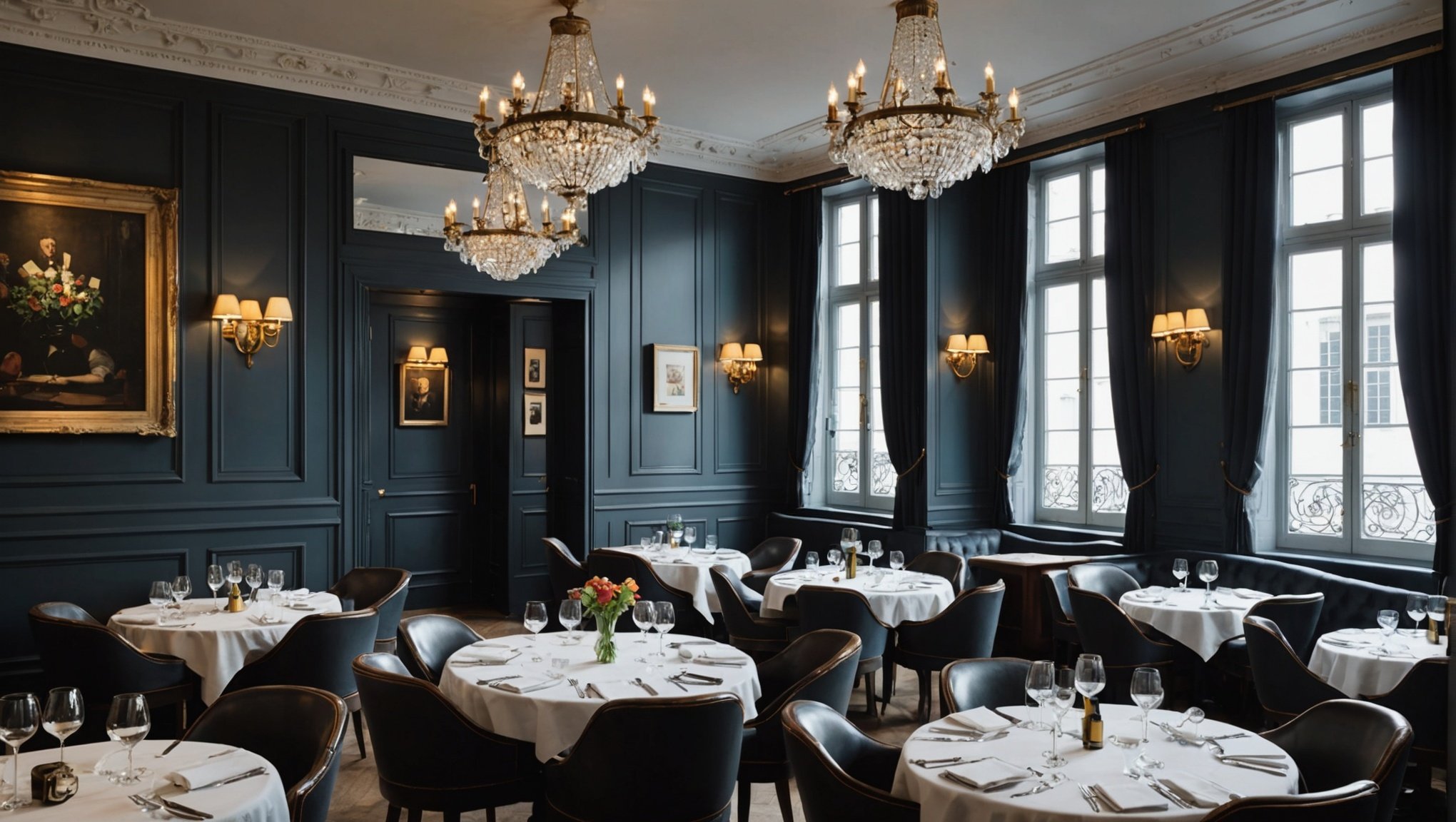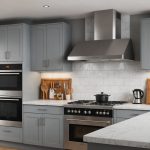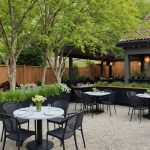Renovating a restaurant requires more than just a fresh coat of paint. It’s about creating an atmosphere that resonates with both tradition and modernity. Balancing classic charm with contemporary style can attract diverse patrons and enhance their dining experience. This journey of transformation invites creative thinking and strategic planning, ultimately redefining the essence of your establishment. Discover how to merge these elements and elevate your restaurant to new heights, crafting a space that feels both familiar and refreshingly innovative.
Understanding the Importance of Renovation in the Restaurant Industry
Renovation in the restaurant industry is pivotal in creating a modern dining space that enhances customer experience. A well-thought-out renovation can transform a restaurant’s interior design, melding classic design elements with modern aesthetics to create a unique ambiance. This blend of styles not only appeals to a broader audience but also elevates the dining room’s timeless elegance.
Also to read : Transform your rural bistro: key features for creating an inviting sensory garden dining experience
Trends Influencing Renovations
Incorporating trends such as mid-century modern and clean lines into restaurant interiors can set a new standard for dining spaces. These trends emphasize functionality and simplicity, which are crucial in today’s fast-paced world. The Antonovich Group, known for its innovative design style, often combines classic elegance with modern touches to create standout spaces.
- Classic Design Elements: Chandeliers, wood paneling
- Modern Touches: Minimalist furniture, open spaces
- Focal Points: Art installations, statement lighting
Blending Styles for Impact
The importance of blending classic and contemporary styles cannot be overstated. By integrating elements of real estate design, such as guest rooms and living rooms, into the dining space, restaurants can offer a home-like comfort with modern sophistication. This approach not only enhances aesthetic appeal but also creates a welcoming environment that encourages repeat visits.
In parallel : Ultimate noise-reducing flooring options for open kitchen restaurants: your complete guide
Key Principles for Successful Restaurant Renovation
Renovating a restaurant involves blending classic design with modern elements to create a space that is both functional and aesthetically pleasing. Establishing a clear vision and goals is crucial in guiding the renovation process. This vision should harmonize traditional aesthetics with modern functionality to create a cohesive design theme that resonates with guests.
Understanding these principles can significantly enhance the renovation process.
Establishing a Clear Vision
A well-defined vision helps in selecting the appropriate interior design elements. Consider how mid-century modern can be integrated into the dining room, balancing clean lines with classic elegance. The Antonovich Group often exemplifies this by combining modern classic styles, ensuring the space feels both timeless and contemporary.
Balancing Aesthetics and Functionality
Incorporating modern decor while maintaining classic touches is essential. Use minimalist furniture to open up the space, creating a living room feel that is both inviting and sophisticated. Statement lighting can serve as a focal point, enhancing the room’s ambiance.
- Classic Design: Chandeliers, wood paneling
- Modern Touches: Minimalist furniture, open spaces
- Focal Points: Art installations, statement lighting
Creating a Cohesive Theme
A successful renovation should result in a space with timeless elegance. By integrating elements from home design and real estate, such as guest rooms and living rooms, restaurants can offer a comforting yet sophisticated environment.
Case Studies of Successful Restaurant Renovations
Exploring transformative design examples in the restaurant industry
Notable Renovations Blending Styles
Several restaurant renovations have successfully merged classic design with modern interiors, creating spaces that exude timeless elegance. A prime example is a project by the Antonovich Group, which transformed a dated dining room into a vibrant space with clean lines and modern decor. By incorporating mid-century modern elements, they achieved a balance between past and present, setting a new standard in restaurant design.
Lessons Learned from Case Studies
From these renovations, key lessons emerge: the importance of a cohesive interior design and the strategic use of focal points like statement lighting. These elements not only enhance visual appeal but also create a welcoming atmosphere. The integration of living room aesthetics into dining spaces offers guests a home-like experience, blending comfort with sophistication.
- Classic Design Elements: Chandeliers, wood paneling
- Modern Touches: Minimalist furniture, open spaces
- Focal Points: Art installations, statement lighting
Visual Transformations
Before-and-after transformations reveal the impact of thoughtful design. Spaces once cluttered and outdated now boast modern classic charm, inviting patrons to enjoy a dining experience that feels both familiar and innovative. This approach not only elevates the restaurant’s ambiance but also enhances its appeal in the competitive real estate market.
Cost Management Strategies for Renovation Projects
Exploring effective budgeting techniques for restaurant renovations
Assessing Costs Versus Benefits
When embarking on a restaurant renovation, it’s essential to weigh the costs against the potential benefits. Modern classic design styles can significantly elevate a dining room’s appeal, but careful budgeting is crucial. Evaluating the return on investment from incorporating mid-century elements, such as clean lines and statement lighting, helps in making informed decisions.
Tips for Staying Within Budget
Staying within budget requires strategic planning and resource management. Consider these tips:
- Prioritize Needs: Focus on essential upgrades that enhance interior design and customer experience.
- Reuse Materials: Integrate existing furniture and decor when possible to reduce costs.
- Negotiate with Vendors: Seek competitive pricing for materials and labor to ensure cost-effectiveness.
Finding Cost-Effective Materials and Labor
Identifying affordable resources is key to successful renovations. Collaborate with suppliers who offer quality home decor and interior elements at reasonable prices. The Antonovich Group exemplifies this approach by sourcing materials that balance classic design with modern aesthetics. This method not only maintains timeless elegance but also ensures the project remains financially viable.
By adopting these strategies, restaurateurs can create captivating spaces that resonate with guests, blending living room comfort with real estate sophistication.
Selecting the Right Color Palette
Exploring the impact of color theory on restaurant interiors
Psychological Effects of Colors on Dining Experiences
Understanding color theory in design is crucial for creating a dining room that enhances the guest experience. Colors can evoke emotions and influence behavior, making them a powerful tool in restaurant interior design. Warm colors like reds and oranges can stimulate appetite, while cooler shades like blues and greens provide a calming effect, contributing to a timeless elegance. By integrating these insights, restaurateurs can create spaces with a balanced ambiance that appeals to diverse clientele.
Recommended Color Combinations for Classic and Modern Aesthetics
To achieve a modern classic look, blend classic design elements with contemporary hues. For instance, pairing mid-century modern tones such as mustard yellow and teal with neutral shades can enhance a room’s sophistication. The Antonovich Group often uses these combinations to create interiors that exude both warmth and elegance.
Tools for Visualizing Color Schemes in Design
Utilizing digital tools can help visualize potential color schemes effectively. Software like Adobe Color offers palettes that harmonize modern decor with traditional aesthetics. These tools allow designers to experiment with different combinations, ensuring the final design aligns with the restaurant’s vision and enhances its real estate appeal.
- Warm Colors: Red, orange
- Cool Colors: Blue, green
- Neutral Shades: Beige, gray
By carefully selecting the right color palette, restaurants can transform their spaces into inviting environments that resonate with guests.
Furniture Selection and Layout Optimization
Exploring strategies for effective furniture selection and space optimization in restaurant interiors
Types of Furniture That Enhance Both Styles
Choosing the right furniture is crucial in creating a dining room that seamlessly blends classic design with modern aesthetics. Mid-century modern pieces, known for their clean lines and minimalistic appeal, can be paired with classic elements like wood paneling to enhance the room’s timeless elegance. The Antonovich Group often utilizes such combinations to craft dining spaces that are both stylish and functional.
- Classic Elements: Wood chairs, leather booths
- Modern Additions: Sleek metal tables, modular seating
Importance of Functionality and Comfort in Furniture Selection
Functionality and comfort are paramount when selecting furniture for restaurant interiors. Living room-inspired seating can create a welcoming atmosphere, encouraging guests to linger. Prioritizing ergonomic designs ensures that customers enjoy their dining experience, enhancing the restaurant’s appeal in the competitive real estate market.
Tips for Optimizing Space for Customer Flow and Experience
Optimizing space is essential for enhancing customer flow and overall experience. Consider arranging furniture to create distinct spaces within the dining area, such as intimate guest rooms and open living rooms. This approach not only improves functionality but also showcases the restaurant’s unique design style and home decor influences, creating a space with timeless elegance.
Incorporating Branding into the Renovation
Exploring the role of branding in restaurant interior design
Aligning Design Elements with Brand Identity
Incorporating branding into a restaurant renovation involves aligning design elements with the restaurant’s identity. This process ensures that the interior design reflects the core values and personality of the brand. By integrating home decor and modern classic elements, restaurants can create a space with timeless elegance that resonates with their target audience.
Using Design to Communicate the Restaurant’s Story
Design can be a powerful tool to convey a restaurant’s story. By utilizing mid-century modern styles and clean lines, the dining room can become a narrative space. The Antonovich Group exemplifies this by crafting interiors that blend classic design with modern touches, creating a unique ambiance that tells a story.
- Focal Points: Statement lighting, art installations
- Classic Elements: Chandeliers, wood paneling
- Modern Additions: Minimalist furniture, open spaces
Importance of Signage and Visual Branding in Renovations
Effective signage and visual branding are crucial in enhancing a restaurant’s interior design. These elements serve as focal points, guiding guests through the spaces while reinforcing the brand. Combining living room aesthetics with home design elements can create inviting guest rooms that reflect the restaurant’s real estate sophistication.
Enhancing Customer Experience Through Design
Exploring how design elements improve restaurant atmosphere and customer satisfaction
Elements of a Positive Dining Atmosphere
Creating a welcoming dining room involves strategic use of interior design. Mid-century modern styles, characterized by clean lines and minimalist furniture, enhance the space with timeless elegance. The Antonovich Group often integrates classic design elements, like chandeliers, to serve as a focal point. This blend of modern classic and traditional styles creates a harmonious space that appeals to diverse clientele.
Impact on Customer Satisfaction and Retention
A thoughtfully designed interior can significantly impact customer satisfaction. Living rooms with home decor elements provide a home with modern comfort, encouraging guests to linger. Guest rooms with classic elegance foster a sense of exclusivity and warmth. By incorporating these elements, restaurants can enhance their real estate appeal and boost customer retention.
Case Examples of Design Improvements
- Lighting: Installing statement lighting improves ambiance and highlights key spaces.
- Furniture: Using a mix of mid-century modern and classic pieces creates a balanced room.
- Layout: Open living room layouts facilitate better customer flow and interaction.
These design strategies, when applied effectively, transform restaurant interiors, elevating the overall dining experience.
Expert Opinions on Blending Styles
Insights from design experts on combining classic and modern elements in restaurant interiors
Interviews with Interior Designers
Renowned designers emphasize the significance of blending classic design with modern touches to create spaces with timeless elegance. Experts from the Antonovich Group highlight the importance of integrating clean lines and mid-century modern elements to enhance the interior design of a dining room. According to them, achieving balance between classic and modern classic styles can transform a restaurant into a welcoming space with a unique charm.
Common Mistakes to Avoid
- Overcomplicating designs with excessive furniture and decor
- Neglecting the importance of focal points like statement lighting
- Ignoring the need for a cohesive design style
Future Trends in Restaurant Design
Designers predict a shift towards incorporating living room aesthetics into dining spaces, creating a home with modern comforts. The use of home decor elements such as classic chandeliers and modern modular seating is expected to rise. Additionally, the trend of using real estate principles to design guest rooms within restaurants is gaining traction, offering a home design that feels both exclusive and inviting.
By understanding these insights, restaurateurs can create interiors that not only appeal to guests but also stand the test of time in the competitive market.
Visual Examples and Resources for Inspiration
Exploring resources for design inspiration in restaurant renovations
Recommended Websites and Magazines
For those looking to transform their dining room into a space with timeless elegance, several resources offer valuable insights. Websites like Architectural Digest and Elle Decor showcase modern classic and mid-century modern interiors, providing ideas for blending classic design with modern elements. Magazines such as Interior Design and Dwell highlight the integration of clean lines and home decor into living rooms and guest rooms.
Utilizing Social Media Platforms
Social media platforms like Pinterest and Instagram are treasure troves for discovering new design styles. By following accounts focused on interior design, users can explore spaces that combine classic elegance with modern touches. The Antonovich Group often shares projects that exemplify home with modern aesthetics, offering inspiration for creating unique dining spaces.
Creating a Mood Board
A mood board is an effective tool for visualizing renovation concepts. By compiling images of furniture, lighting, and decor, designers can ensure a cohesive design style. This approach helps in aligning the interiors with the desired real estate appeal, focusing on focal points and living room aesthetics.
- Websites: Architectural Digest, Elle Decor
- Magazines: Interior Design, Dwell
- Social Media: Pinterest, Instagram
By leveraging these resources, restaurateurs can create interior spaces that resonate with their clientele.







No responses yet